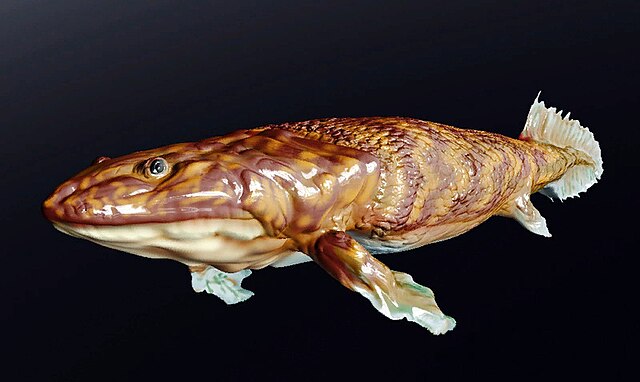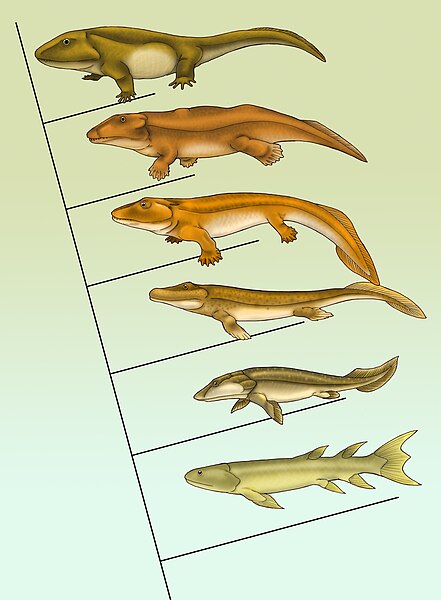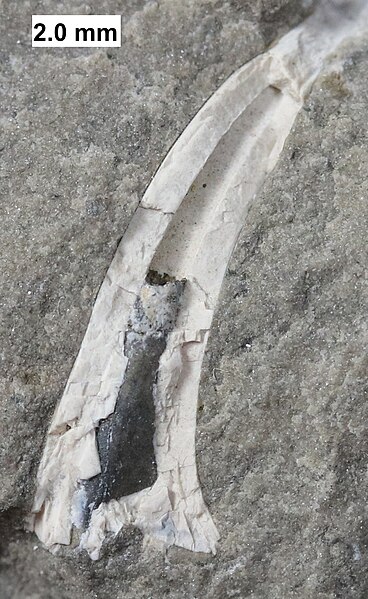Panderichthys is a genus of extinct sarcopterygian from the late Devonian period, about 380 Mya. Panderichthys, which was recovered from Frasnian deposits in Latvia, is represented by two species. P. stolbovi is known only from some snout fragments and an incomplete lower jaw. P. rhombolepis is known from several more complete specimens. Although it probably belongs to a sister group of the earliest tetrapods, Panderichthys exhibits a range of features transitional between tristichopterid lobe-fin fishes and early tetrapods. It is named after the German-Baltic paleontologist Christian Heinrich Pander. Possible tetrapod tracks dating back to before the appearance of Panderichthys in the fossil record were reported in 2010, which suggests that Panderichthys is not a direct ancestor of tetrapods, but nonetheless shows the traits that evolved during the fish-tetrapod evolution
Panderichthys
Digital restoration
Restoration showing side to side undulation
Panderichthys (second from the bottom) in an evolutionary context with other tetrapodomorphs
Sarcopterygii — sometimes considered synonymous with Crossopterygii — is a clade including both a group of bony fish commonly referred to as lobe-finned fish, and tetrapods. They are characterised by prominent muscular limb buds (lobes) within their fins, which are supported by articulated appendicular skeletons. This is in contrast to the other clade of bony fish, the Actinopterygii, which have only skin-covered bony spines supporting the fins.
Guiyu oneiros, the earliest-known bony fish, lived during the Late Silurian, 419 million years ago). It has the combination of both ray-finned and lobe-finned features, although analysis of the totality of its features places it closer to lobe-finned fish.
Tooth from the sarcopterygian Onychodus from the Devonian of Wisconsin
Image: Latimeria Paris
Life restoration of Sparalepis tingi and other fauna from the Silurian of Yunnan








